Inside\Within is a constantly updating web archive devoted to physically exploring the creative spaces of Chicago's emerging and established artists.
Support for this project was provided by The Propeller Fund, a joint administrated grant from Threewalls and Gallery 400 at The University of Illinois at Chicago.

Search using the field below:
Or display posts from these tags:
3D printing 3D scanning 65 Grand 7/3 Split 8550 Ohio 96 ACRES A+D Gallery ACRE animation Art Institute of Chicago Arts Incubator Arts of Life audio blogging Brain Frame CAKE Carrie Secrist Gallery casting ceramics Chicago Artist Writers Chicago Artists Coalition Chicago Cultural Center Cleve Carney Art Gallery Clutch Gallery Cobalt Studio Coco River Fudge Street collage collection Columbia College Chicago Comfort Station comics conceptual art Contemporary Art Daily Corbett vs. Dempsey Creative Capital DCASE DePaul University design Devening Projects digital art Dock 6 Document drawing Duke University dye Elmhurst Art Museum EXPO Chicago Faber&Faber fashion fiber Field Museum film found objects GIF Graham Foundation graphic design Harold Washington College Hatch Hyde Park Art Center illustration Image File Press Imagists Important Projects ink installation International Museum of Surgical Science Iran Jane-Addams Hull House Museum jewelry Joan Flasch Artist's Book Collection Johalla Projects Julius Caesar Kavi Gupta Links Hall Lloyd Dobler LVL3 Mana Contemporary metalwork Millennium Park Minneapolis College of Art and Design Monique Meloche Museum of Contemporary Art Chicago (MCA) Museum of Contemporary Art Detroit (MOCAD) Museum of Contemporary Photography (MoCP) National Museum of Mexican Art (NMMA) National Resources Defense Council New Capital Northeastern Illinois University Northwestern University Ox-Bow painting paper mache Peanut Gallery peformance Peregrine Program performance photography PLHK poetry portraiture printmaking public art Public Collectors publications Renaissance Society risograph rituals Roman Susan Roots&Culture SAIC screen printing sculpture Sector 2337 Shane Campbell Silver Galleon Press Skowhegan Slow Smart Museum Soberscove Press social practice South of the Tracks Storefront SUB-MISSION Tan n' Loose Temporary Services Terrain Terrain Biennial text-based textile textiles The Banff Centre The Bindery Projects The Cultural Center The Franklin The Hills The Luminary The Packing Plant The Poetry Foundation The Poor Farm The School of the Art Institute of Chicago (SAIC) Threewalls Tracers Trinity College Trubble Club University of Chicago University of Illinois at Chicago (UIC) University of South Florida at Tampa Valerie Carberry Vermont Studio Center video weaving Western Exhibitions wood carving woodwork Yellow Book Yollocalli Arts Reach zinesInside\Within is produced in Chicago, IL.
Get in touch:
contactinsidewithin@gmail.com
MuWDV: Danielle Rosen's Ritualized Animality
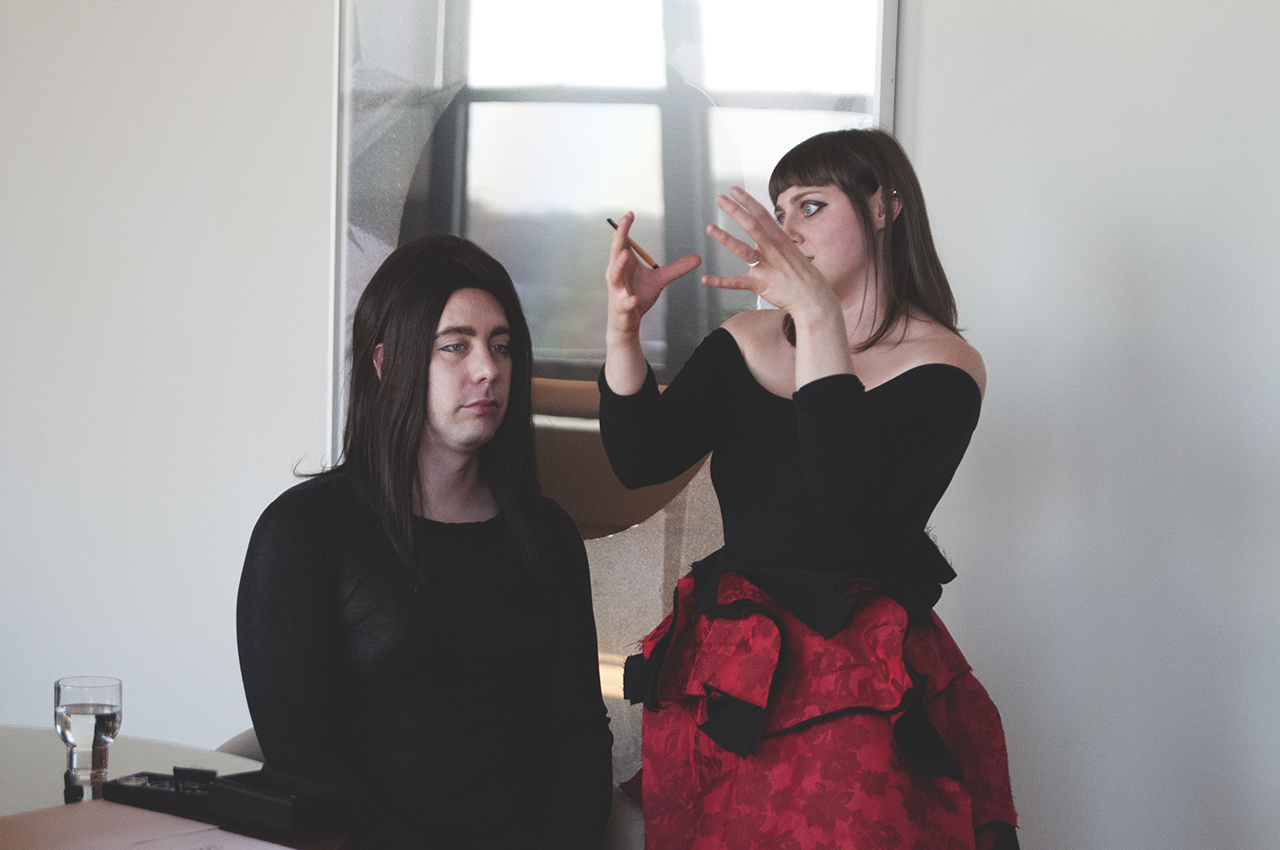
INSIDE\WITHIN and Danny Volk sit down with Danielle Rosen to discuss how humans have framed non-humans throughout history, consider Patricia Rose’s position as a performative platform, and get a rare chance to see Danny in a see through t-shirt.
Danielle Rosen: Danny are you ready to get made up?
Made-Up w/ Danny Volk: Let’s do it.
DR: For this interview, I created a script and performance entitled, The Makeup of Fashion: A Ritual. Danny’s body will be treated as a contemplative object to consider the relationship between the fashioned and the natural. The text borrows from concepts about the body and fashion from various fashion theorists and philosophers, which will be cited below this interview. Danny’s body will become the context for a ritual of becoming: an object, a human, a consumer, gendered, immortal and deathly, through fashion. This ritual will be performed while engaging in discussion with INSIDE\WITHIN and MUwDV about my artistic practice. We will intertwine text and actions throughout this transcript.
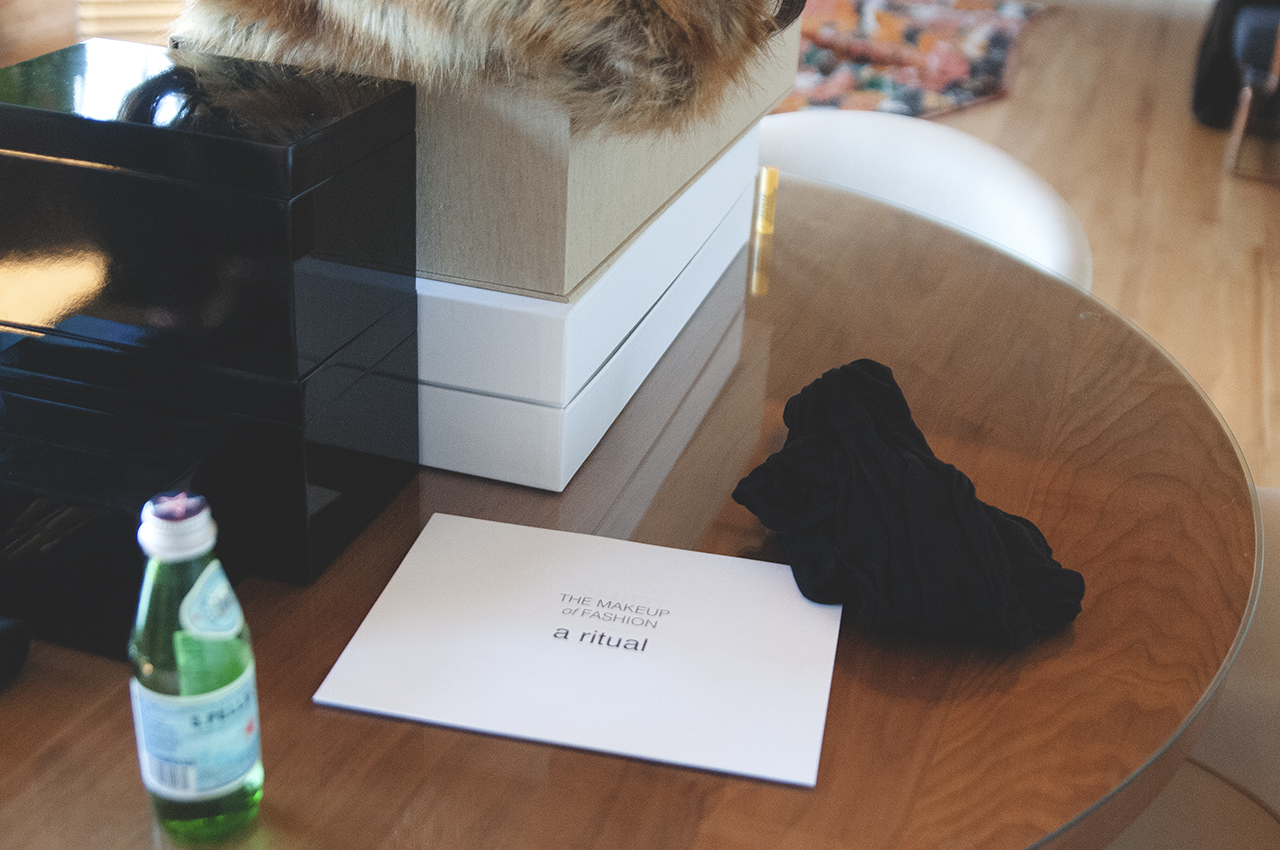
SHIRT
The human animal is a naked animal,
clothed and unclothed.
A sheer shirt.
Showing that you are not showing.
Danny changes into a sheer black shirt.
CREAM
This cream creates an abstract unity
in the color and texture of the skin,
a unity,
like that produced by the tights of the dancer…
This cream
immediately approximates the human being
to statue.
It is successfully designed
to rid the complexion of blemishes
that Nature has strewn.
Foundation is applied to Danny’s skin
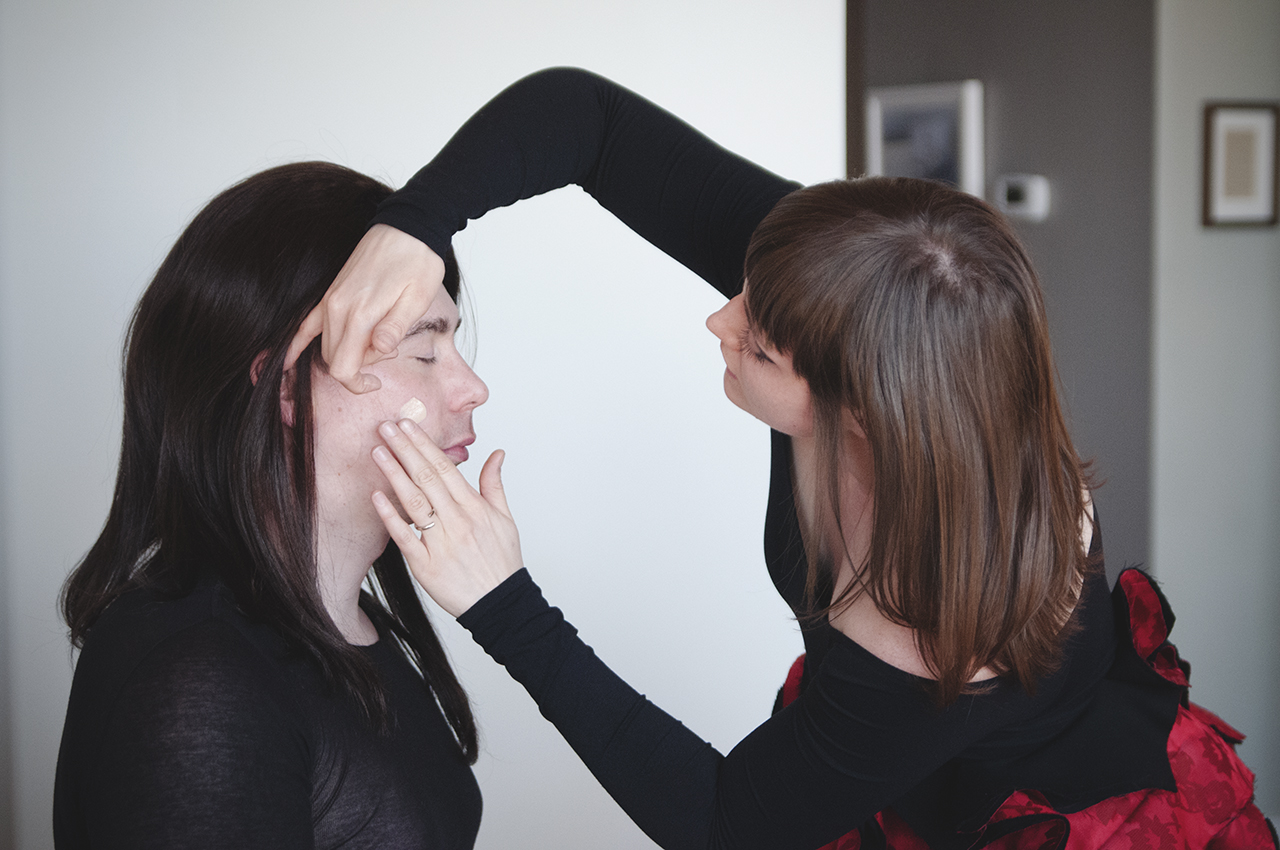
INSIDE\WITHIN: Can you describe your practice’s relationship to non-human animals?
DR: I think about humans and non-human animals through the work. Processing texts, visual symbols and textures becomes a way to poetically examine how humans simultaneously frame humans and non-humans in culture. There is an interesting distancing and division of self that occurs as we consider our relationship to other animals.
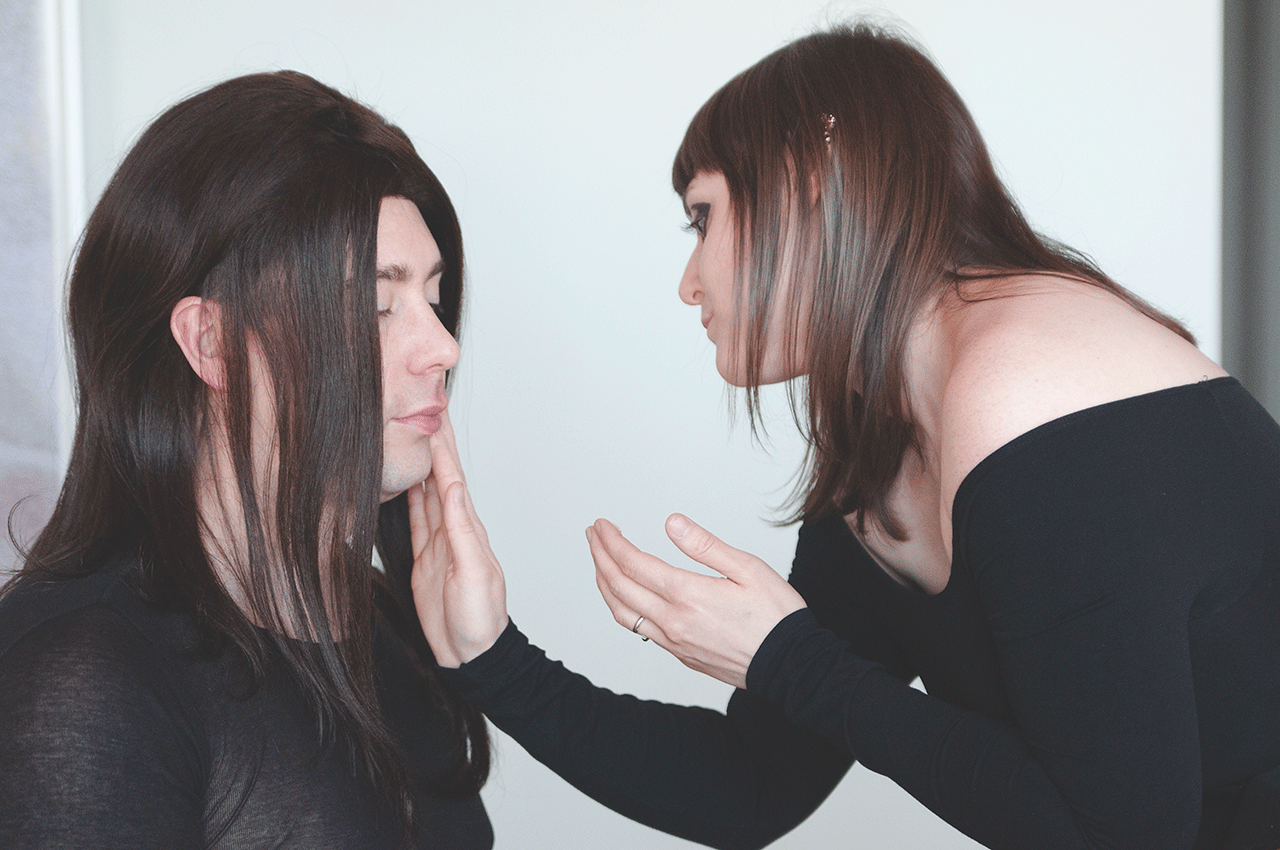
To clarify, I am using the term ‘non-human animal’ to bracket how we as animals are thinking about other animals. We are animals but then there is a cultural denial or sterilization via language of our own animality that changes how we think about our own sensations, our being. A simple way of stating the problem is: I do not know what an animal is and I am an animal. I often think about cave paintings in which early humans revered non-humans through cultural production. This is just one example from a long history of human cultural representations of nonhumans. On the other hand, animality can be represented as a characteristic of baseness that is part of the human. For example, I think about Carolee Schneemann’s Meat Joy. Both baseness and reverie are interesting to me when they are evident within one form. The human-animal unsure about the definition of the animal and condition of animality finds itself oscillating between poles, like reverie and baseness. The other and the self in one.
I\W: Was it these thoughts that inspired your project An Encyclopedia?
DR: I was thinking about how an encyclopedia examines non-human and human animals, grouping them into one larger text in order to explain and classify. Encyclopedias, as objects, are an index of beings that, for me, underscore the distance that language produces. A simple way of stating the problem is: language is different than the thing it describes. The physicality and multiplicity of the individual is lost within the object of the encyclopedia. So in some ways, I wanted to bring that back; to create a vast book made up entirely of distinct physical images that are activated through contact with each image. The project is created in two volumes. One exists within Special Collections at the Joseph Regenstein Library at the University of Chicago. The other lives within the Denver Public Library in the Douglas Fine Print Collection. It is not possible to see the whole object at once.
WIG
It has been written:
that the state of her hair is a sure and convenient criterion of her mental condition.
We already know
that fashion aims for a theatrical sociality.
It matters little that the trickery is known to all.
A long, brunette wig is placed on Danny’s head.
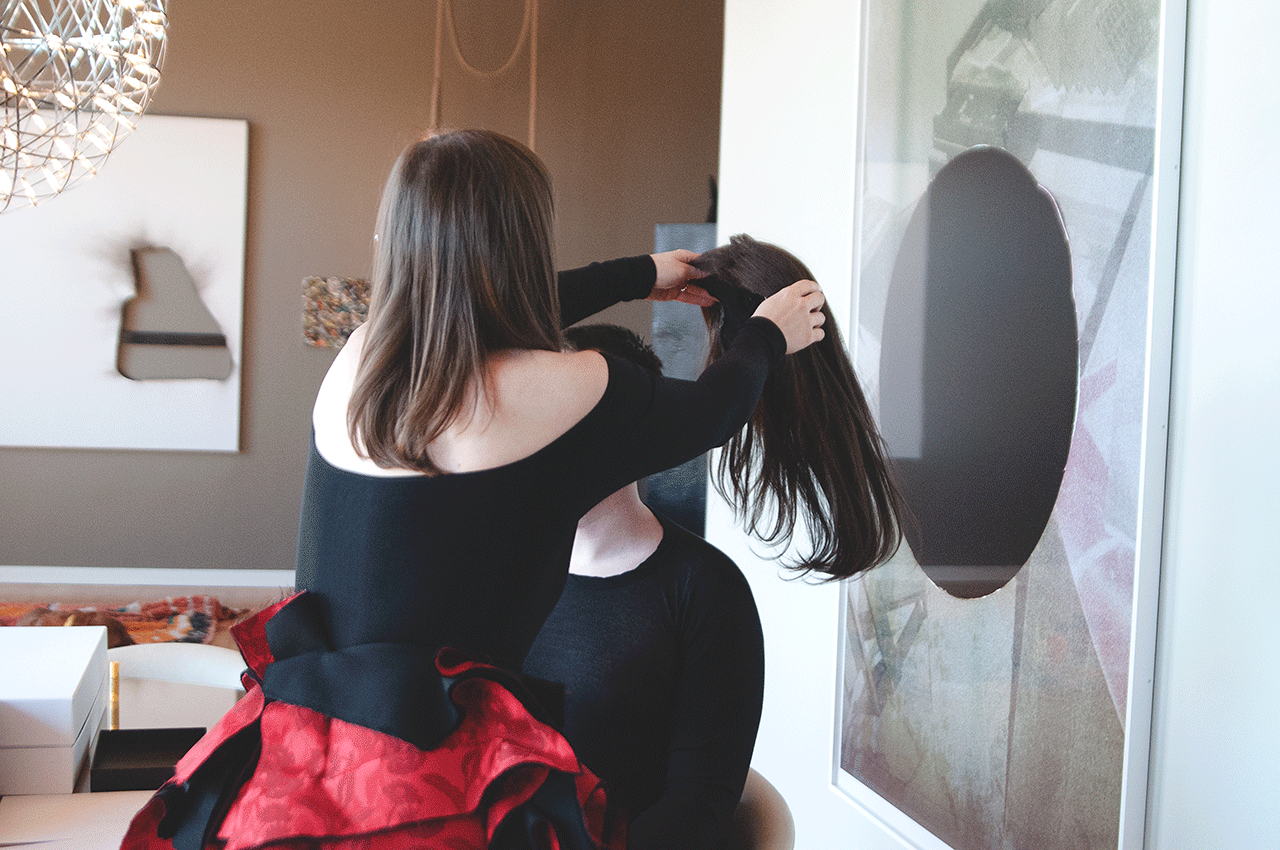
EYES + BROWS
Fashion represents
the unrepresentability
of sexual difference,
the impossibility
of not wearing
a mask.
The mask
is the power symbol
associated with the deity.
And the black frame renders her glance more penetrating.
An eternal gaze.
Eye shadow is applied to Danny’s eyes. Brow liner is applied to bring out his brows.
I\W: Do you believe your practice of research and writing aligns with your sculptural practice in terms of concept and directive?
DR: Yes, all of the work comes from a similar line of questioning that is concerned with animality, language, cultural production or framing, polarities, and modes of becoming.
The performances and the objects operate differently. The performances more directly quote my research and present my writing. They are distinct from the sculptural and photographic objects that I’ve been producing. The part of my practice that is devoted to making objects allows entities to exist autonomously. In a way, the objects function as performers that produce poetic relationships between materials and spaces. The Patricia Rose performances are more about bleeding and polyvocality; different entities, performers, voices, and texts coming together, breaking apart.
Rose is a collaborative context or performative platform, not an alter ego. For example, a recent Patricia Rose performance started with a script that I constructed. The script was passed onto Jen Smoose who contributed sonically. Then the script was passed onto Guy Eytan, who contributed textually. Later the text was performed with the sound by myself and Guy. Now the same set of components will be used to create a choreographic work that further interprets this text and the sound will be recomposed to respond to the choreography.
Simply put, the objects are these discrete experiences that have a very performative presence, whereas the performances are more collaborative, interminable, and uncontrolled. I like having those different aspects to the practice.
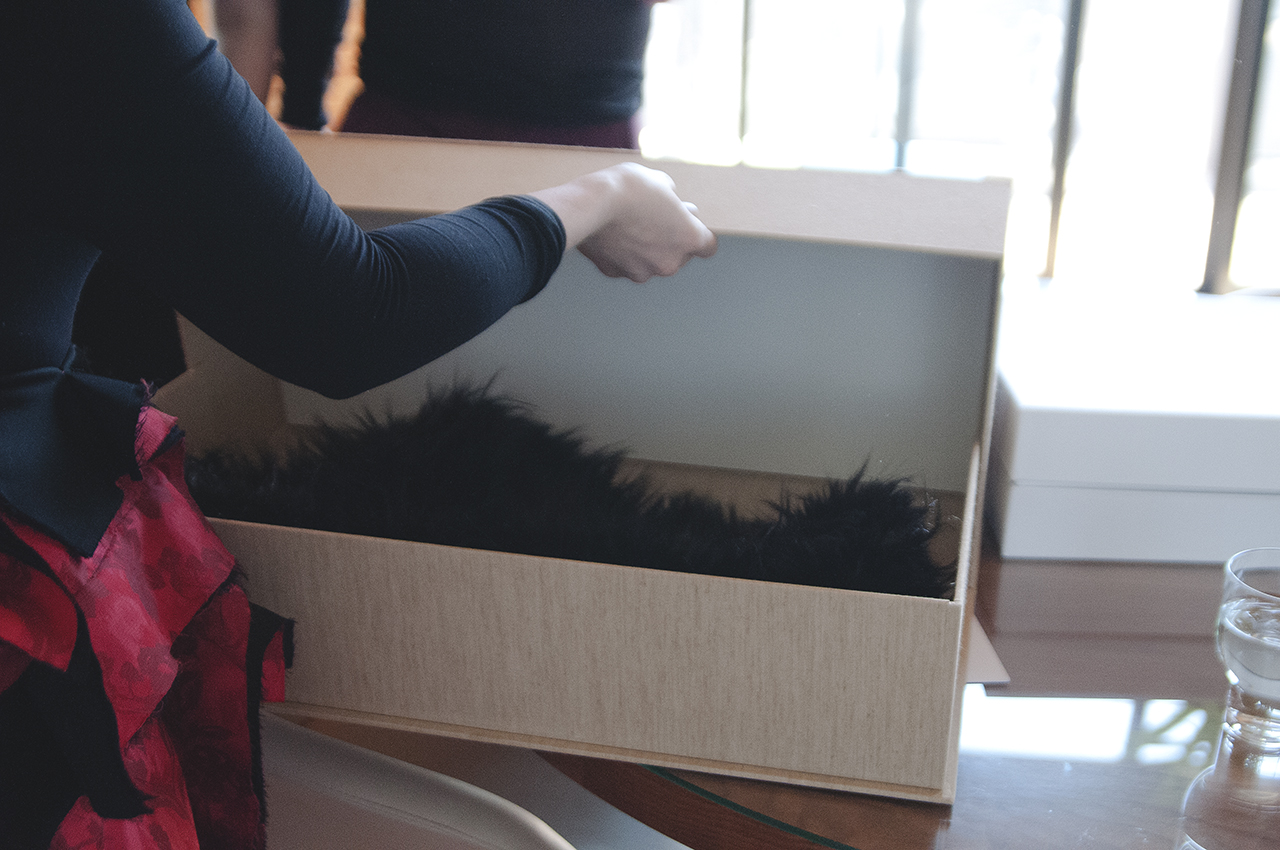
I\W: Would you consider An Encyclopedia and the Institute For Species Systemization (ISS) as published performances?
DR: Yes, both start with performative actions.
For An Encyclopedia, the performative act is the process of building the sculptural world of the photograph (for me) and of physically examining volumes of photographic specimens (for the viewer). With An Encyclopedia, the images are equally as important as the performativity of the object. It asks viewers to read images.
The ISS book began with a series of performances that involve audience participation, which resulted in textual data and paperwork. I always thought of the ISS book as poetry that elaborates on preexisting performative documentation; integrating the poem and the document.
Currently, there are two different aspects to the ISS project that I should explain. The ISS, as an institution, no longer exists. Patricia Rose is the only remaining figure. However, as I mentioned earlier, Rose has evolved into a context or a performative platform that I invite other people to participate in. Previously, she was only embodied by me but I found this limiting. Viewers began to think of Rose as an alter ego, whereas I understood her as a performative context. She references how language and naming distance us from ourselves. She embodies the fluidity of self and being. In texts that are authored by Rose, references to non-humans and humans are shifting, pronouns are confused, the gender and voice of the performer is allowed to mutate. Rose is a platform where different beings can become; entities are not bound to particular categories, they are permitted to shift and metamorphose at will. Anything authored by Rose involves several layers of performance.
I\W: Danny how did it feel to portray Patricia Rose?
MUwDV: Well, I’ve known Danielle for a while and Patricia Rose only through images and stories. So it made sense that I was actually Patricia Rose as much as anyone else. At the same time I did feel like an imposter, that I was speaking things I didn’t understand, trying to convince people of things they didn’t understand. The words became this connector and this distancer simultaneously. We shared these words, the audience and I. But they divided us, made us suspicious of each other, of our intelligence, and made us afraid of each other.
Rose is a platform where different beings can become; entities are not bound to particular categories, they are permitted to shift and metamorphose at will. Anything authored by Rose involves several layers of performance.
LIPSTICK
It is widely known
that crimson shades
contain cochineal extract
This pigment
is made by pulverizing
the bodies of females.
Fashion mocks death.
And like the dual gender signaling of the cuttlefish:
Woman becomes man becomes fetishized woman becomes mannequin
Lipstick is applied to Danny’s lips.
STOLE
We put the hair of an other
on our hairless bodies
conspicuous consumption
we morph and we molt
we forget the dangers of mimesis.
The image of death and becoming.
The continuum of becoming through culture.
motley cadavers.
A large faux fur stole is laid over Danny’s torso.

I\W: What sort of materials have you been placing into your sculpture works recently?
DR: I have been combining found objects and then casting them. In a recent sculpture I used a beluga whale sculpture, a didactic model, with the leg of a hunting decoy, a wolf, to create the base. The top is a decoy of a heron, used to scare off other birds. That is combined with part of an alligator, made for decoration. For the sculpture I was thinking of the different functions of these objects that are caricatures of non-humans. Some of the objects, like the decoys, are manufactured to influence the behaviors of nonhumans in our shared animal space. Others, like the alligator, are made to perform as benign, unthreatening ornaments. Each found object has a different function in relation to the human. One is didactic, one is for hunting, one is to keep others away, and another is to lure them in. It is interesting to bring all of these different representations together into a composition to consider the diverse ways in which we humans represent other beings. The casting is important to me to emphasize the fact these images are reproductions. The process of reproducing creates additional layers of abstraction.
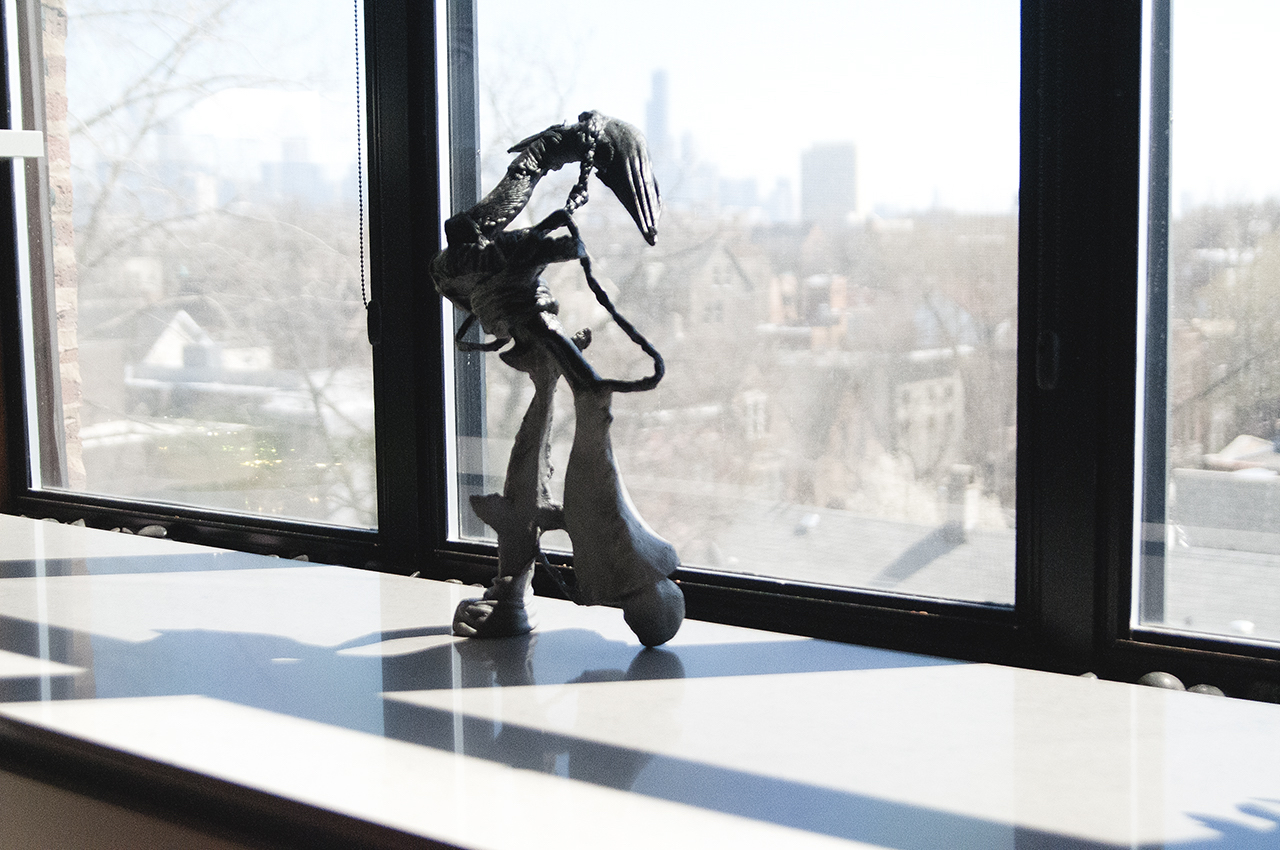
I\W: What does it mean to rearticulate the use of these objects as art forms?
DR: Humans have been creating a myriad of images of nonhumans as well as objects that use the bodies of others as material for ages, across cultures. Duchamp created the first readymade. Nochlin talks about the fractured body as a metaphor for modernity and postmodernism has further complicated this fragmentation. I think about all of these ideas coming together to constitute a whole.
I\W: Can you talk about your recent work with totems?
DR: I didn’t know they were totems when I was making them, that became the referent later on. I started making these tall, stacked sculptures because of the confines of my space. My studio is very narrow and tall, so I only have the space to build up. As I began constructing these stacked objects, I started thinking about totems and totem poles. They are amalgamated forms. In a totem, a variety of non-humans are stacked on top of each other to create a whole. They are also ritual objects that embody performativity. They are often not properly framed within a museum, so there are problems of cultural appropriation and reframing that occur. Like many sculptural objects, totems have a front and a back. I am interested in creating different dichotomies within one being, like sterility and corporeality. Or something that is soiled and something that is very clean. So, I wanted the front and back to also have these contrasting characteristics.
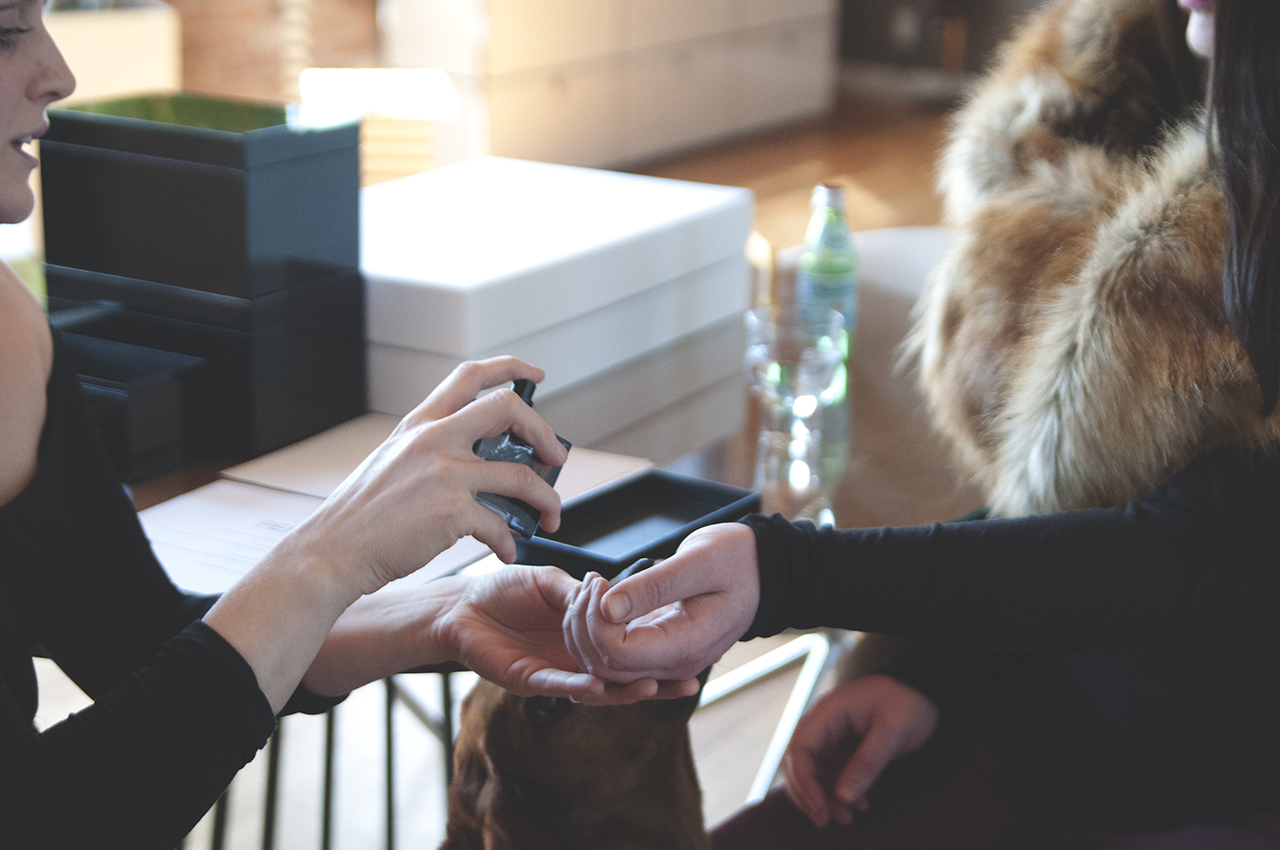
PERFUME
Guerlain said that perfumes should smell of “the underside of my mistress.”
On one hand:
Perfume is sprayed on Danny’s left hand
To cover your animal scent. To make you trackable, human, cultured, sterilized, appealing. Creamy cashmere and white peonies.
On the other hand:
Perfume is sprayed on Danny’s right hand
To exude your animality. To make you desirable, unknowable, sultry, of the earth, appalling. Musky fecal order, chili pepper, tobacco.
And the sweetness of thousand odors fused.
As we conclude our ritual of dress and becoming,
We might say
That fashion is a sublime deformation of Nature,
or rather a permanent and repeated attempt at her reformation.
What is natural.
Sheep fat. Synthetic fibers. Bear Grease. Capsaicin. Coco Butter. Fucus. Latex. Raw Flesh. Roses, Wax, and Ox Marrow.
The body is the material of fashion.
Danny is sculpted into a final pose, with a lily in hand. He is sculpted to be photographed.
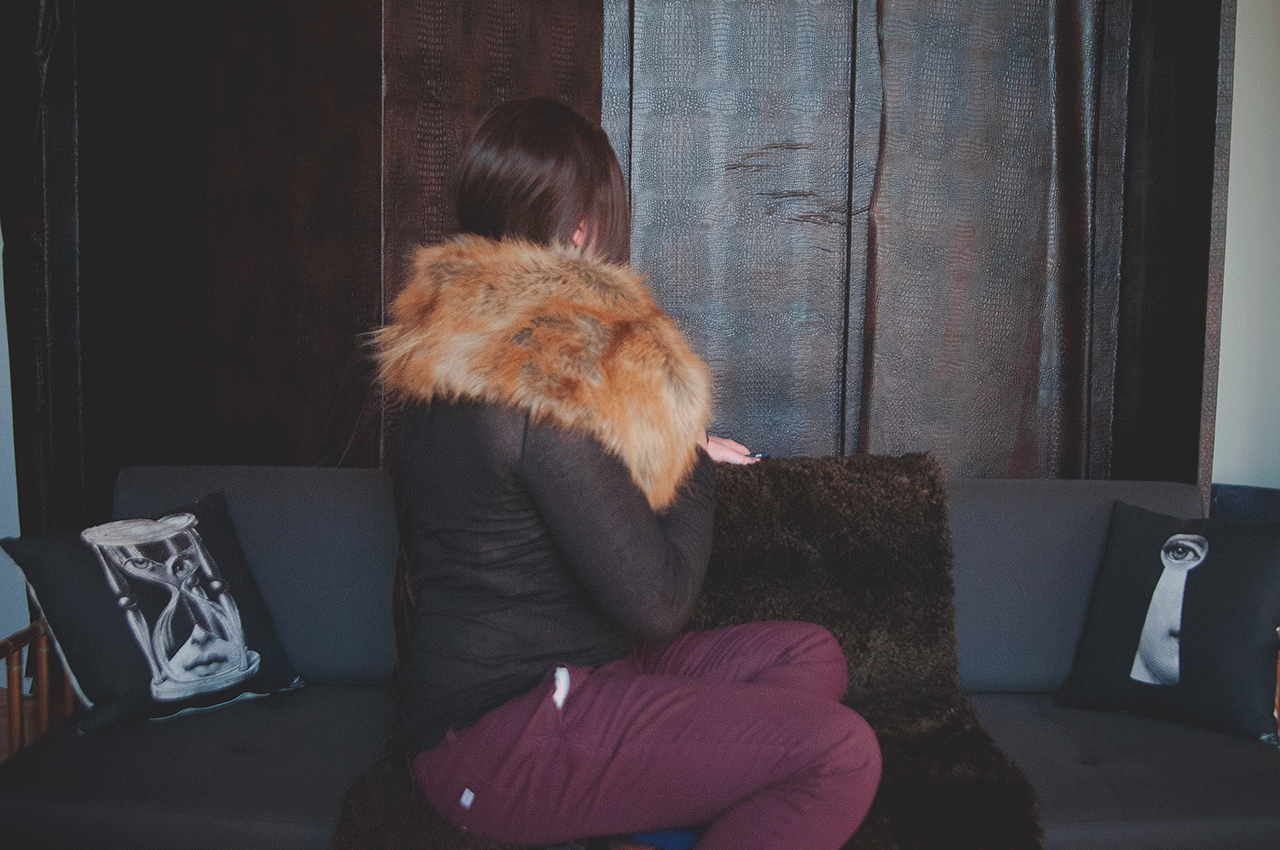
WORKS CITED
Bataille, Georges, and Stuart Kendall. The Cradle of Humanity: Prehistoric Art and Culture.
New York: Zone, 2005. Print.
Baudelaire, Charles, and Jonathan Mayne. The Painter of Modern Life, and Other Essays.
London: Phaidon, 1964. Print.
Benjamin, Walter, and Rolf Tiedemann. The Arcades Project. Cambridge, MA: Belknap, 1999.
Print.
Chen, Mel Y. Animacies: Biopolitics, Racial Mattering, and Queer Affect. Durham, NC:
Duke UP, 2012. Print.
Edson, Gary. Masks and Masking: Faces of Tradition and Belief Worldwide. Jefferson, NC:
McFarland, 2005. Print.
Riello, Giorgio, and Peter McNeil. The Fashion History Reader: Global Perspectives.
Milton Park, Abingdon, Oxon: Routledge, 2010. Print.
Taussing, Michael. Beauty and the Beast. Chicago: U of C, 2012. Print.
Vinken, Barbara. Fashion Zeitgeist: Trends and Cycles in the Fashion System. Oxford:
Berg, 2005. Print.


